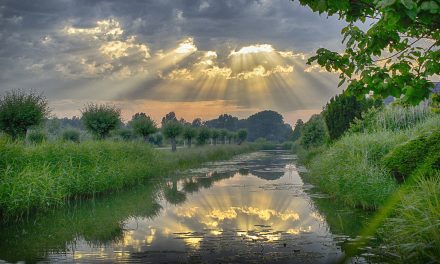
In Yellowstone National Park, a beetle infestation wiped out more than a million acres of whitebark pines. That created cascading problems, including the invasion of bears in lower elevations, where they come into more frequent conflict with humans.
National parks are some of our favorite wild places, set aside for all of us to enjoy and for wildlife to find some yet remaining, far-too-scarce natural habitats. Here, in these lands, we can recharge, find solace and connect and reconnect with our families. Although many of these iconic places and loved landmarks have been in our hearts and psyches for as long as we can remember and have changed little over the course of our lifetimes, national parks as we have known them are now being quickly altered by climate change.
A recent study published by scientists from the University of California at Berkeley and from the University of Wisconsin warns that climate change has adversely and uniquely affected many of the 419 National Park System units spread across the United States and its territories. Some parks may be irreparably damaged already. Rising oceans and severe storms are cutting away at parks in coastal areas from Alaska to Florida. Wildfires are transforming the towering conifer forests in Yellowstone National Park into grasslands, and once-mighty ice sheets in Glacier National Park are melting and flowing into the sea.

In Glacier National Park, some effects of climate change are strikingly clear. Glaciers are melting, and many have already disappeared.
Location causation
To conduct the study, published in the September 2018 issue of Environmental Research Letters, scientists looked at data from between 1895 and 2010. They found that temperatures across the nation’s 419 protected areas have increased by 1.8 degrees Fahrenheit, double the amount compared to the rest of the country. While both temperatures and aridity went up, precipitation rates have drastically gone down, decreasing by 12 percent across the nation’s national parks yet only decreasing by 3 percent in the U.S. as a whole.
The reason for this, say the researchers, is because of the parks’ locations. Many national parks are in the Arctic at high elevations where warming occurs faster due to a thinner atmosphere, or they’re located in dry weather areas in the southwestern United States.
In fact, in Alaska, the 23 national historical parks, national monuments, national parks, national preserves and wild rivers managed by the National Park Service cover about 54 million acres (more than 60 percent of the land managed by the National Park Service nationwide). And those Alaska lands have seen the worst temperature increases. As the climate warms, the ground heats up and the snow melts. With the snow gone, the land’s color then turns darker, and darker colors absorb more sunlight and get subsequently even hotter. The permafrost begins to melt. That not only puts glaciers at risk, but polar bears as well, who depend on the sea ice. In the Southwest, where many other parks are found, rising temperatures coupled with droughts have ravaged the region.

Of the more than 100,000 glaciers in Alaska, 95 percent are currently retreating, stagnating or thinning, and most of Glacier Bay National Park’s glaciers follow this trend. There are a few exceptions, however. ©Guldem Ustun, flickr
Drought data and melt metrics
For example, between 1948 and 2000, Muir Glacier in Glacier Bay National Park in Alaska has shed more than 2,099 feet of ice; and forests in the Noatak National Preserve and in Yosemite National Park have thinned and shifted, moving into meadows. Vast areas of forests are dying in Yellowstone National Park from droughts and more frequent, intense wildfires. Yellowstone’s cold winters used to kill pine beetles. But warmer seasons have extended the life of these insects, which can feast on trees longer and in greater numbers. The transforming ecosystem there may force bison and other animals away from familiar grounds.
It could get much worse, say the scientists. Yellowstone National Park could see up to 10 times more areas burned by wildfires by 2100, while the namesake, famous Joshua trees could die out in Joshua Tree National Park.
Temperatures in our national parks could increase six times faster in the 21st century than they did in the 20th. Alaska’s national parks alone could see up to a 16-degree-Fahrenheit temperature increase.

Climate change is shifting vegetation upslope in Yosemite National Park, even moving forests into mountain meadows. ©A Gude, flickr
Exposure emergencies
Despite these losses, there are also some gains. Vanishing snowfields have revealed archaeological finds that otherwise would never have seen the light of day. In recent years, baskets, bones, clothes, seeds, tools, wood and other artifacts up to 10,000 years old have emerged from the ice in Glacier, Rocky Mountain and Yellowstone National Parks and a number of parks in Alaska. These items are providing us with a window into the past and humanity’s deep history before ice overtook the land—and what we may face in the future as it again disappears.
The catch, however, is that these artifacts have to be found shortly after the ice melts, or they’ll quickly rot away once exposed to the air. Researchers have been racing to keep up, but it’s an uphill battle with the landscapes changing so rapidly.

At Joshua Tree National Park, climate change poses a threat to many cherished species, such as the desert bighorn sheep, the desert tortoise and the Joshua tree.
Carbon dioxide curbing
There is another bright spot. The authors of the study state that the temperature increases can be attributed to human-caused climate change and that by reducing greenhouse gas emissions, we may be able to curb the climate’s impact at our parks.
Carbon dioxide has recently risen to its highest level in 800,000 years, well beyond the natural range of variation. And this atmospheric carbon has a unique chemical signature, different from the carbon that comes from volcanoes or plants. Human activities (such as deforestation and carbon pollution due to automobiles and power plants) pump 9 billion tons of carbon into the atmosphere every year. Forests and ocean waters only absorb 5 billion tons a year. So, reducing greenhouse gas emissions could reduce projected temperature increases by at least a half and possibly up to two-thirds.
Some solutions are already underway. In Maine’s Acadia National Park, for instance, biologists have introduced trees from farther south that may be better suited to a climate that will probably grow warmer in coming decades. Alaska’s Glacier Bay was the first national park to complete an inventory of its greenhouse gas emissions, and it earned the state’s Climate Friendly Park designation. It adopted a no-idling policy for park vehicles and is using four electric vehicles to cut down on the related emissions. Glacier Bay is also replacing its power plant generators with more efficient and cleaner-burning models, and is studying the feasibility of using hydropower from the nearby town of Gustavus.

Yellowstone’s climate is changing. A continued rise in temperature will alter the amount and timing of the spring snowmelt, which affects the movement of wildlife, from spawning trout to migrating bison.
Open grounds for generations
It’s vital to defend national parks—which make up 4 percent of U.S. land—because they’re becoming even more important sanctuaries for plants and animals as other lands are developed. And along with trees to soak up carbon, the parks hold vast amounts of watersheds to replenish drinking water.
In the future, our parks will likely continue to exist in some form. But it’s clear that they’re changing more quickly and more dramatically than they ever have in the past.
National parks are the places for geysers and grizzlies. They should also be the spots for next generations and perpetual public grounds.
Here’s to finding your true places and natural habitats,
Candy


































